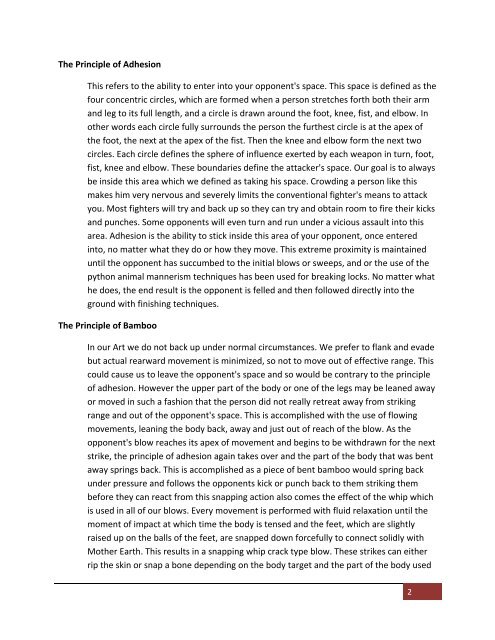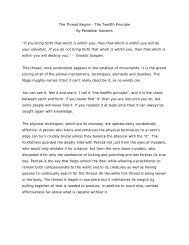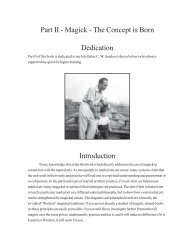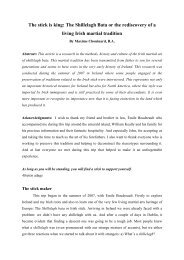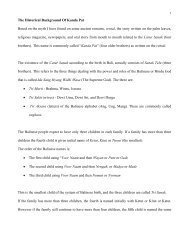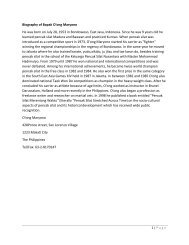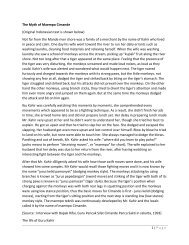The Eleven Principles - Pukulan Cimande Pusaka
The Eleven Principles - Pukulan Cimande Pusaka
The Eleven Principles - Pukulan Cimande Pusaka
You also want an ePaper? Increase the reach of your titles
YUMPU automatically turns print PDFs into web optimized ePapers that Google loves.
<strong>The</strong> Principle of Adhesion<br />
This refers to the ability to enter into your opponent's space. This space is defined as the<br />
four concentric circles, which are formed when a person stretches forth both their arm<br />
and leg to its full length, and a circle is drawn around the foot, knee, fist, and elbow. In<br />
other words each circle fully surrounds the person the furthest circle is at the apex of<br />
the foot, the next at the apex of the fist. <strong>The</strong>n the knee and elbow form the next two<br />
circles. Each circle defines the sphere of influence exerted by each weapon in turn, foot,<br />
fist, knee and elbow. <strong>The</strong>se boundaries define the attacker's space. Our goal is to always<br />
be inside this area which we defined as taking his space. Crowding a person like this<br />
makes him very nervous and severely limits the conventional fighter's means to attack<br />
you. Most fighters will try and back up so they can try and obtain room to fire their kicks<br />
and punches. Some opponents will even turn and run under a vicious assault into this<br />
area. Adhesion is the ability to stick inside this area of your opponent, once entered<br />
into, no matter what they do or how they move. This extreme proximity is maintained<br />
until the opponent has succumbed to the initial blows or sweeps, and or the use of the<br />
python animal mannerism techniques has been used for breaking locks. No matter what<br />
he does, the end result is the opponent is felled and then followed directly into the<br />
ground with finishing techniques.<br />
<strong>The</strong> Principle of Bamboo<br />
In our Art we do not back up under normal circumstances. We prefer to flank and evade<br />
but actual rearward movement is minimized, so not to move out of effective range. This<br />
could cause us to leave the opponent's space and so would be contrary to the principle<br />
of adhesion. However the upper part of the body or one of the legs may be leaned away<br />
or moved in such a fashion that the person did not really retreat away from striking<br />
range and out of the opponent's space. This is accomplished with the use of flowing<br />
movements, leaning the body back, away and just out of reach of the blow. As the<br />
opponent's blow reaches its apex of movement and begins to be withdrawn for the next<br />
strike, the principle of adhesion again takes over and the part of the body that was bent<br />
away springs back. This is accomplished as a piece of bent bamboo would spring back<br />
under pressure and follows the opponents kick or punch back to them striking them<br />
before they can react from this snapping action also comes the effect of the whip which<br />
is used in all of our blows. Every movement is performed with fluid relaxation until the<br />
moment of impact at which time the body is tensed and the feet, which are slightly<br />
raised up on the balls of the feet, are snapped down forcefully to connect solidly with<br />
Mother Earth. This results in a snapping whip crack type blow. <strong>The</strong>se strikes can either<br />
rip the skin or snap a bone depending on the body target and the part of the body used<br />
2


